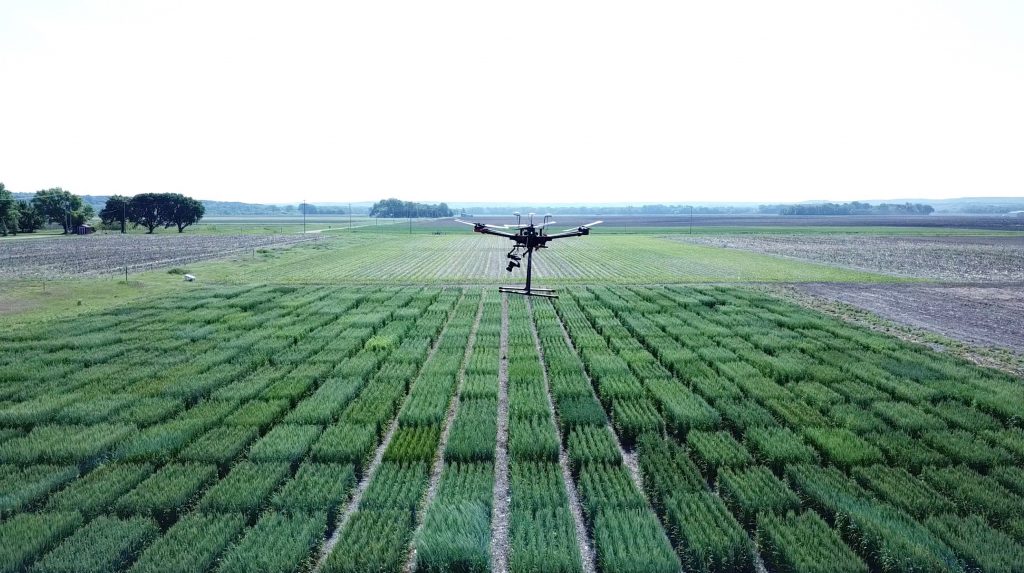
News
Plant Breeding
Cereals
How are scientists making wheat more climate resilient?
June 19, 2019 By American Society of Agronomy and Crop Science Society of America
 This drone is collecting data about the wheat in research plots, Manhattan, KS. Drones are able to collect data much faster about plant physical attributes – phenotypes – and other important information. Photo courtesy of Amita Mohan.
This drone is collecting data about the wheat in research plots, Manhattan, KS. Drones are able to collect data much faster about plant physical attributes – phenotypes – and other important information. Photo courtesy of Amita Mohan. Wheat is a staple crop to 35 per cent of the world population. It’s a temperate crop, meaning it is sensitive to increasing temperatures. Wheat is particularly sensitive during the growth stages when it produces flowers and seeds (which are also grains).
How are scientists developing more heat resilient crops? Blogger Amita Mohan, out of Washington State University, says that scientists are looking at solutions from several angles:
- Identifying germplasm that is most resilient to climate – Scientists around the world are screening hundreds of wheat lines to identify lines better suited to climate change. They are looking at both the phenotype and the genotypes.
- Breeding more photosynthetically efficient wheat – Plants vary in their photosynthetic efficiency. Even a slight increase in the efficiency (0.5 per cent) would substantially increase the wheat yield around the globe. Some are also looking for ways to increase biomass, spike photosynthesis and grain size.
- Looking to the roots – Roots not only hold plants in place, they are the major way plants get water and nutrients. By developing wheat breeds with longer root systems, may help the crop be more drought (and heat) tolerant.
“Research is an ongoing process,” Mohan says. “The varieties breeder develop in the lab and greenhouse must then be tested in the field. Then, field trials need to go further, to make sure that the wheat grain is acceptable in attributes like flavour, cooking and baking ability, and its ability to be stored. Creating new varieties is a long-term process – one that began many decades ago, and will continue into the future. This will help us to continue to have a nutritious, safe food supply for the world’s growing population.”
Read the full post on how scientists are making wheat more climate resilient here.